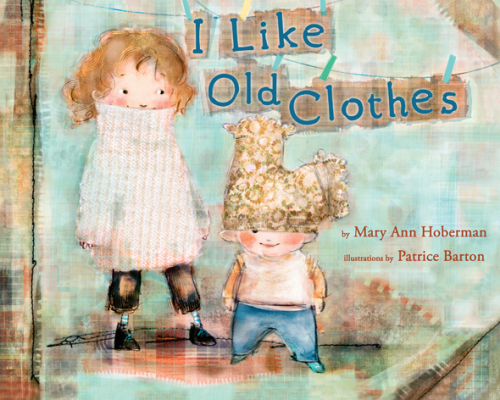
I Like Old Clothes
فرمت کتاب
ebook
تاریخ انتشار
2012
Lexile Score
530
Reading Level
0-2
ATOS
2.8
Interest Level
K-3(LG)
نویسنده
Patrice Bartonشابک
9780375983634
کتاب های مرتبط
- اطلاعات
- نقد و بررسی
- دیدگاه کاربران
نقد و بررسی

elvis416 - this book is a story about a kid who likes old clothes. it is very funny. i recommend this book to you and i give it 5 stars.

July 2, 2012
“I like old clothes,/ Hand-me-down clothes,/ Worn outgrown clothes,/ Not my own clothes.” Former U.S. children’s poet laureate Hoberman’s poem, first published in 1976, holds up nicely; families are still trading bags of too-small clothes, and children are still enjoying hand-me-downs (“And party dresses/ Not quite new,/ Not quite in style,/ I like them, too”). Barton’s (Mine!) spreads couldn’t be any warmer or fuzzier. Her mixed-media scenes incorporate images of patterned fabrics for the clothes, and soft pencil lines and blurry edges give the artwork a painted feel. A girl in overalls and sneakers—just the sort of girl one might imagine having a sensible attitude toward secondhand apparel—is pictured in her room with her younger brother, trying on a small marching band uniform (first spotted in a store window on the title page) and vamping in a pair of long black gloves. The poem stays in one register,
exploring the theme from several angles, without any real narrative arc; it’s written more just for the joy of the rhymes and the rhythm. Ages 5–8. Agent: Christina A. Tugeau, CATugeau.

July 15, 2012
Hand-me-downs gain new poetic life in this charming picture-book remake. Originally published with illustrations by Jacqueline Chwast, here Hoberman's 1976 poem gets a makeover courtesy of illustrator Barton. Kirkus panned the original for attempting too much with too little, finding Hoberman's "silly rhyme" as threadbare as its theme of recycled clothing and Chwast's "overpopulated pictures" teeming with a "freakish cast." Thankfully, the Barton edition coheres much better. While Hoberman's thematic insistence on the delight to be found in imagining the prior ownership of secondhand clothes is a little heavy-handed, her verse comes across as playful and light: "I like old clothes. / I really do. / Clothes with a history, / Clothes with a mystery, // Sweaters and shirts / That are brother-and-sistery...." Barton's digitally rendered mixed-media illustrations capture well the warmth of Hoberman's message, using wispy lines and softly accented shading to imbue these garments with such life that they actually seem capable of some determinism in their hand-me-down trajectory. Particularly effective is the final spread, in which a clothesline strung between windows displays many of the "Now-for-play clothes" featured earlier, giving the poet's concept of a garment's past and future a smartly literal linearity. With Barton's nuanced illustrations, Hoberman's 36-year-old hand-me-down poem defines sustainability for the next generation. (Picture book. 3-7)
COPYRIGHT(2012) Kirkus Reviews, ALL RIGHTS RESERVED.

Starred review from June 1, 2012
PreS-Gr 1-Hoberman's 1976 picture book is dressed up with new illustrations. A precocious unnamed girl describes her love of vintage apparel: "I like old clothes./I really do./Clothes with a history, /Clothes with a mystery." With rhymes that are never too sweet, the girl says how she likes to imagine who wore the items before her and how, and then make them her own through embellishments or just through use (such as wearing formerly dressy pants to play hopscotch). The imaginative child's enthusiasm is infectious-kids might well be inspired to ask for secondhand outfits themselves. The clever, humorous illustrations show the smiling, red-haired girl modeling arm-length buttoned-up gloves, sewing a too-long yellow dress, or imagining the former owner of a school-uniform sweater. Barton uses fabriclike backgrounds in most of the illustrations (which were created with pencil, mixed media, and assembled and painted digitally), making the backdrop to the whole book look like beautifully faded fabric swatches. The overall effect is a visual celebration of old clothes.-Heather Talty, formerly at Columbia Grammar & Preparatory School, New York City
Copyright 2012 Library Journal, LLC Used with permission.

























دیدگاه کاربران